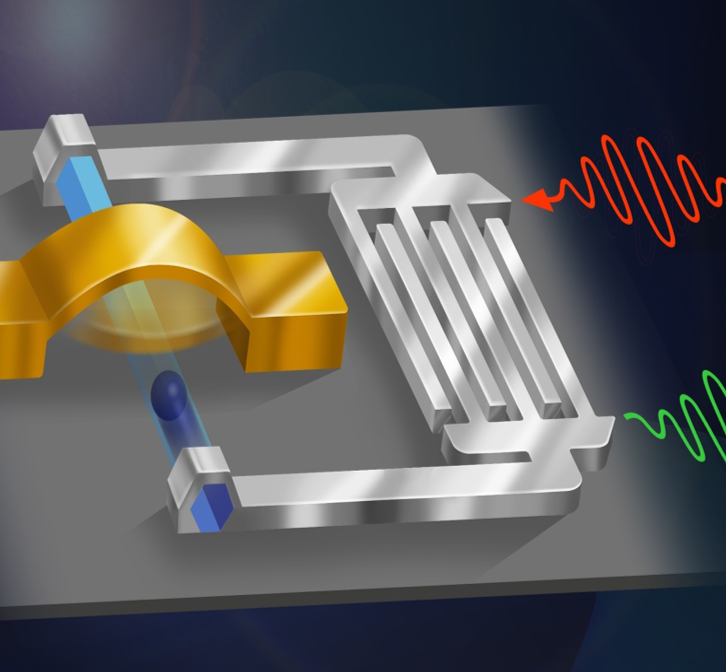The radiation pressure of photons generates the interaction between photons and mechanical oscillators, and this “optomechanical” interaction is an important quantum resource for realizing quantum technology with photons and phonons [1]. We investigate a route to study mm-wave photons using superconducting optomechanics. By employing mm-waves at sub-THz frequencies, we aim to explore the single-photon strong coupling regime of optomechanics and discover novel routes to harness the sub-THz photons for quantum information technology.
[1] M. Aspelmeyer et.al., Rev. Mod. Phys. 86, 1391 (2014).


One of the important directions in quantum information technology is building networks of quantum nodes [2]. Since microwave photons from superconducting qubits are easily obscured by thermal noise at room temperature, coherent microwave-to-optical conversions of photons become necessary for a long-distance network of superconducting qubits. We develop optomechanical transducers that coherently and bidirectionally convert GHz microwaves to infrared light to meet this challenge. The device’s efficiency is determined by an efficient photon-phonon conversion, and we focus on developing integrated superconducting and photonic circuits to maximize efficiency.
[2] J. KImble, Nature 453, 1023–1030 (2008).
Micro- and nano-scale mechanical oscillators have been widely used as sensitive force sensors, for instance in scanning force microscopy. Recent advances in quantum measurements of mechanical oscillators have opened up the possibilities of reaching quantum limits of force sensing and utilizing quantum noise reduction techniques such as back-action evasion [3] and squeezing. We work on applying the knowledge of quantum measurements in mechanical oscillators to demanding sensing applications. Resulting “mechanical” quantum sensors could benefit a range of cutting-edge science that requires increasingly sensitive detectors. Currently, our mechanical quantum sensors target Majorana fermions, single spins, and inertial forces with the aim of providing quantum-enhanced sensitivities.
[3] J. Suh et.al., Science 344, 1262–1265 (2014).

Surface acoustic wave (SAW) phonons play a crucial role in advancing the field of quantum technology. These phonon, traveling along the surfaces of piezoelectric materials, can be precisely controlled to develop highly sensitive sensors and advanced signal processing devices. By exploiting the interaction between SAW phonons and other quantum systems, such as magnon and superconducting qubits, we are exploring ways to increase strong coupling. This research not only extends the frontiers of quantum sensing technologies but also enables applications in quantum computing and quantum communications, where precise control of phonons is essential [4].
[4] K.J. Satzinger, Nature 563, 661–665 (2018).



